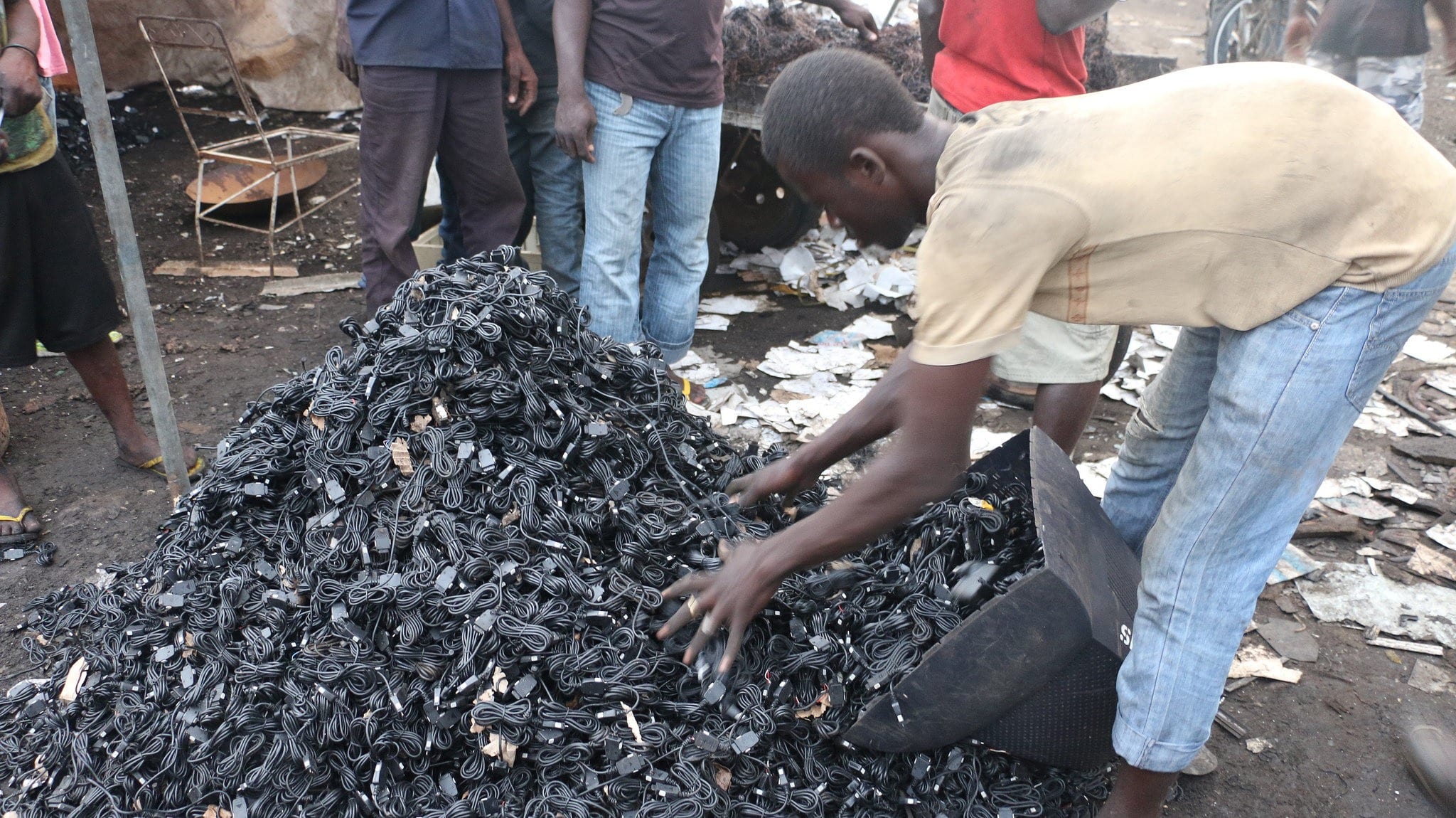Demanding a ‘right to repair’
Companies are creating products that aren't designed to be fixed.
16 January 2019
Two weeks ago Apple slashed its sales forecast, citing falling demand in China alongside other reasons. But there is a more positive explanation too: people are using their Apple products, especially iPhones, for longer. Apple unintentionally encouraged this trend when they introduced a cheap battery replacement for certain iPhone owners (subsequently discontinued) to mitigate the PR disaster that followed the discovery that the company had deliberately slowed the performance of older phones.
Apple’s huge revenue is partly driven by the high rates of turnover for Apple products. Like many manufacturers, the company makes it unnecessarily expensive and inaccessible to repair its products. This means consumers are trapped into throwing away their products instead of repairing them, which means huge amounts of electronic waste, already one of the fastest growing waste streams in the world. Manufacturers see repair from unauthorised vendors as a direct threat to their revenue, both in terms of new product sales and profits from in-house repairs.
The right to repair is about more than just allowing us to fix our products. In order to make it possible for consumers to repair their phones, fridges, and other goods, manufacturers have to provide replacement parts, diagnostic tools and service manuals to all who need it — from individuals to independent repair shops. They also need to recognise the rights of consumers to open everything we own, modify and repair our stuff, and unlock and jailbreak the software in our products.
Campaigners secured a series of partial victories from an EU Parliament initiative to make consumer goods last longer and be designed for repair. In December EU member states voted to set these new manufacturing standards for fridges and freezers, with additional product groups being considered over the coming months. But the long term survival of these rules in the UK is uncertain, and will partly be determined by the nature of Brexit.
But while the EU has been making steps towards the right to repair, the global picture is different. Agricultural equipment company John Deere recently used copyright law to prevent farmers from being able to repair their tractors themselves.

From design and a lack of spare parts, to software and terms and conditions, manufacturers are using a whole range of tactics to block consumers’ ability to repair products.
Manufacturers often make design decisions for products that limit or totally preclude repair. Product parts are very often glued or welded together, which makes them hard to replace. Manufacturers use customised screws and fittings: when Apple released the iPhone 4, the phone was put together using a new screw for which you could not buy a screwdriver. This forced users to go through Apple to get the product repaired. Apple also used the repair process to retroactively fit these screws to all iPhones.
Another strategy is to limit the availability of key components like batteries, motors or critical connectors, or make them disproportionately expensive. This means that individuals and small repair shops can’t access spare parts, forcing consumers to either send their goods back to the original manufacturer for repair, which can be expensive and take considerable time, or buy new ones.
The rise of the digital economy and the internet of things means that more of our products are running complex software. Manufacturers can exploit this software to lock consumers into only using in-house repair shops or buying brand new products. Software upgrades can be incompatible with older models, and force people to buy new products when they expire. Apple took this further in April 2018 when they disabled all iPhone 8s that had had their screens repaired by independent repair shops. Manufacturers can also control access to the diagnostic software needed to troubleshoot problems, limiting who can repair them.
The final tactic is to use warranties and terms and conditions to advise against or forbid certain actions, like opening the device to fix it. Sony has various stickers that must be broken to open a Playstation 4 that specifically state that tampering with them invalidates the warranty. Although legally dubious, these signposts are an effective deterrent for people trying to repair their gadgets, and force them through the official repair chain.
Many manufacturers are busy creating a lucrative monopoly on repair. Companies don’t want you to get their products fixed yourself. They want you to get them fixed by an in-house repair service or, preferably, to buy a whole new product altogether. It took a lawsuit to force Apple to offer a battery replacement program for the iPod. The repair service that they offer for the iPod Shuffle is more expensive than buying a new product.
We urgently need legislation that forces manufacturers to design products to improve their reparability, make spare parts available to everyone at reasonable costs, update software responsibly, and not abuse terms and conditions.
NEF wants to be part of the push to make our products last longer — to protect the planet and our pockets. So today we have signed the Manchester Declaration, which calls for the repair of products, especially electronics, to be made more accessible and affordable, while ensuring that we adopt product standards that make products easier to repair.
Join the Restart Party
While we wait for policy makers to catch up, you can take your broken products to a restart party, where people teach each other how to repair their broken and slow devices.
Topics Technology






